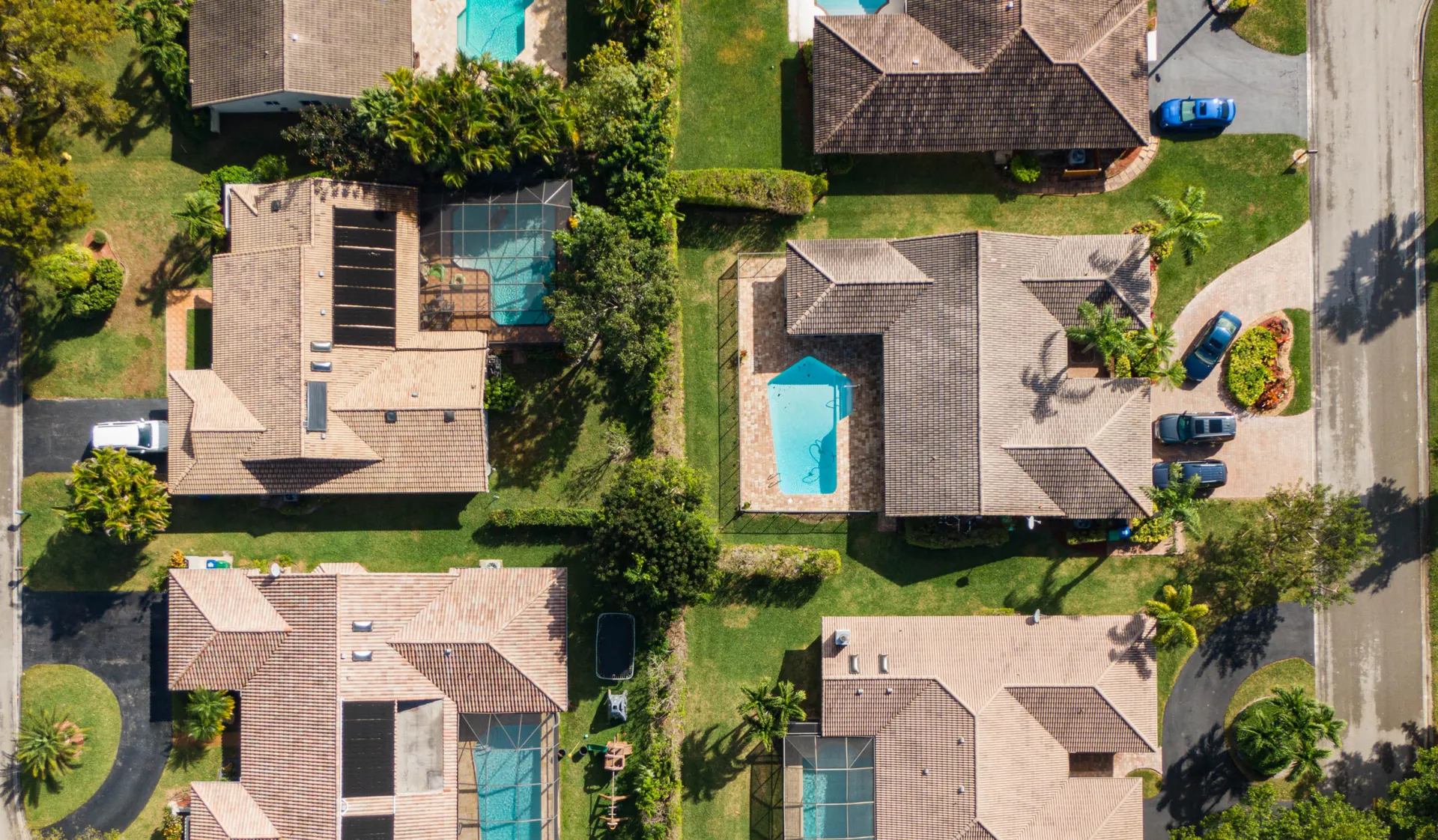A sunny paradise located in the southeast of the United States, Florida is the ultimate vacation destination with its subtropical and tropical climate extending from north to south. Considering the white sand beaches, long and warm summer days, and frequent thunderstorms cooling the temperature, the state is aptly branded as the “Sunshine State.” People who are fond of warm days would absolutely love it here.
Climate in Florida
Summer & Fall
Summers in Florida are hot and sunny, making it one of the best outdoor times. The days are perfect for enjoying beaches with clear and pristine waters, golf courses, art and cultural galleries, theme parks, and more. The temperature and heat remain uniform across the state from south to north and generally remain between 31 °C and 33 °C (88 °F and 91 °F) in daytime. Whereas the temperature difference from north to south can be about 6°C with 21 °C (70 °F) in the far north to 27 °C (81 °F) in the Keys.
However, during the Fall, the state also experiences some cloudiness, resulting in thunderstorms in summer, but mostly, they are short-lived for the people to enjoy the sun again shortly. Consider high humidity between June and August and frequent heavy rains from May to mid-October when planning outdoor times. While soothing, warm waters feel pleasant during swimming and water sports, they sometimes bring about deadly hurricanes and tropical storms.
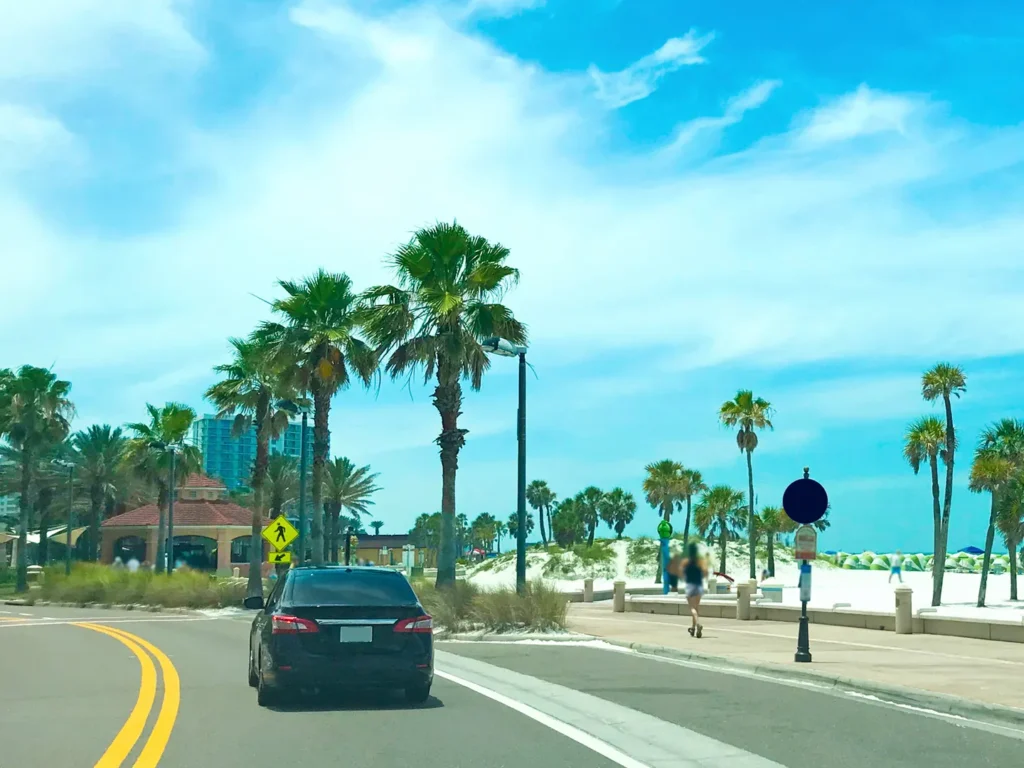
Winter & Spring
Florida during winter is dry and cool, and the average temperature ranges from 11 °C (52 °F) in the north, which is comparatively colder than the south part, with an average temperature of 20 °C (68 °F) in the far south. Although Florida has one of the mildest winters in the country, the weather is generally too cold for sunbathing or water activities; however, it is not cold enough to witness significant hail or snow. The average temperature range in the afternoon and night is 71 °F (22 °C) – 50 °F (10 °C).
The southern part of the state almost never experiences snow, so there can be no better place than Florida for people who long to experience the sun during winter. In fact, winter would be the perfect time to visit the inland attractions in Florida, such as Walt Disney World and Universal Orlando Resort in Orlando, the Sunset Festival in Clearwater Beach, the Museum of Fine Arts in St. Petersburg, the historical culture in St. Augustine, nature reserves in Anna Maria Island, and a lot more. However, the north and central south areas may experience rains due to weather fronts, which may also bring strong thunderstorms and winds, causing potential damage and making outings impossible.
So, after all, Florida is not a total utopia, and there is much more to it. Besides being a beachy haven, Florida has the highest frequency of lightning strikes and thunderstorms. Tornadoes and hurricanes are common in this state, and the heat is sometimes unbearable. All these conditions pose potential risks to life and property, particularly to the outer structures such as sidings and roofs.
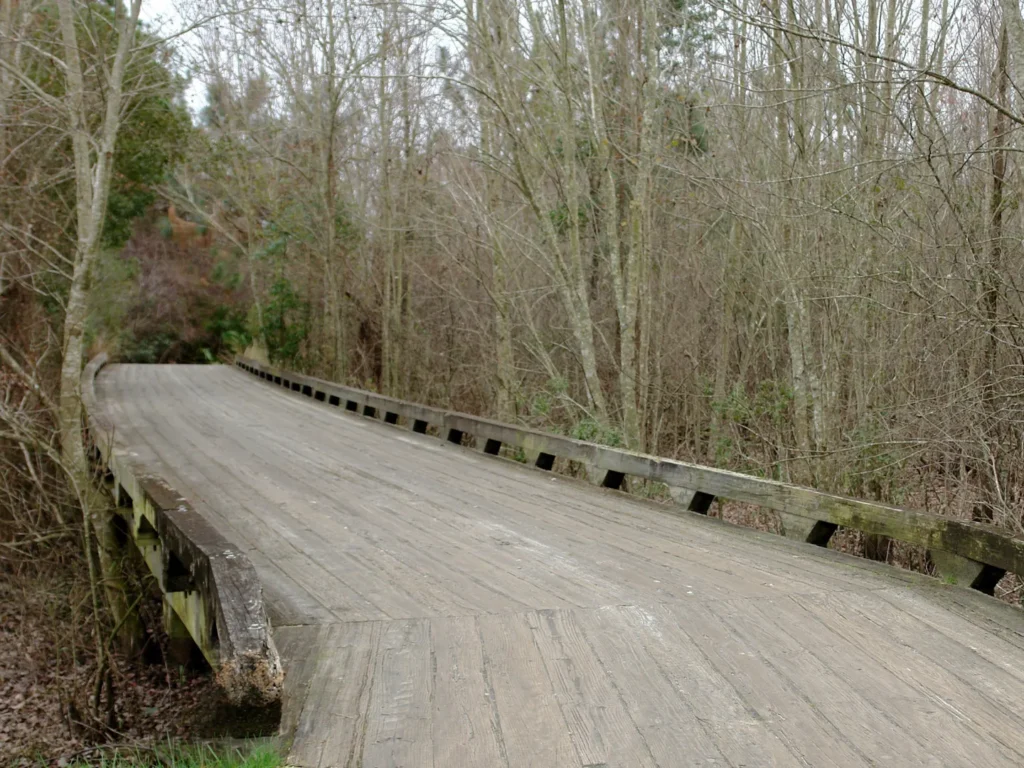
Climate in Florida
Roofs are considered semi-permanent structures that usually last 20-50 years on average in ideal conditions. However, the peculiar climate conditions of Florida make the roofs vulnerable to several types of roof damage, making the average roof durability about 15-20 years. Getting your roof inspected and repaired at regular intervals is a good idea to maintain the house’s structural integrity and avoid significant external and internal deterioration. Read our roof inspection guide here.
Here are the primary weather factors that affect roofing in Florida:
Heat and Humidity Implications
The Sunshine State offers the perfect opportunity for sunbathing, but prolonged exposure can be damaging. The same goes for house roofs, and below are a few ways heat and humidity affect the roofs:
Thermal Expansion
The high temperature in Florida leads to extreme heat, which can cause the roofing materials to expand. As the temperature lowers, these materials contract, causing repeated expansion and contraction, leading to stress and subsequent cracks in the roofing material. Asphalt and metal shingles are generally trusted to tolerate these temperature fluctuations.
Moisture Impact
High humidity means a greater moisture concentration in the environment. This moisture leads to moss, mold, and algae forming on the roof surface, damaging the structure and aesthetic appeal of the house. Anti-algae treatment and regular cleaning can help solve this roof problem.
UV Damage:
Extreme heat and high temperature are often accompanied by constant UV exposure, which leads to a reduced life span of the roof through degradation of the roofing material, fading of the color, and cracking of the surface. UV-resistant coating over roofing materials helps combat this issue of UV damage.
Condensation Effect:
In hot and humid climates, condensation occurs in the roofing system. It can cause water damage, affecting the rafters, joists, and the sheathing or decking and mold formation in enclosed spaces like an attic. Proper ventilation and insulation can take care of roof issues due to condensation.
Effect of High Humidity Mold Growth
The roofs in a high-humidity area like Florida run an extra risk of damage, particularly if the humidity leads to mold growth on the structure. Here is how high humidity and mold impact the roofs:
Compromised Structure
Mold growth on organic materials like wood, one of the most significant constituents of a roof structure, can cause wood to rot or warp. This leads to a compromised quality of roofing material, weakening the overall structure.
Allergen Release
Mold growth not only affects the air quality in the house but can also have a more severe impact on the release of allergens. It produces allergens and mycotoxins that can trigger allergic reactions and respiratory problems, such as asthma.
Aesthetic Impact
The growth of mold or other fungi appears in patches of unsightly stains and causes discoloration on the roof, significantly damaging the house’s curb appeal and diminishing its aesthetic value.
Reduced Air Quality
When mold growth spreads, it can even creep into the house’s interior through leaks, gaps, or ventilation systems. It degrades the air quality in the house and may even release a foul smell.

Damage Due to Salt Air and Corrosion
In coastal and maritime areas, such as the beachy counties of Florida, the salt concentration in the air is relatively high. The presence of sodium chloride in the air affects the longevity of roofing materials and causes corrosion in various ways, some of which are mentioned below:
Current-Induced Corrosion
The high humidity and salt concentration in the air enhance and accelerate the corrosion of the metal parts in the roof, such as iron and steel. The combination of moisture and salt makes an electrolyte that aids the flow of electric current through the metal roof and other materials that conduct electricity. This expedites the process of oxidation and corrosion.
Salt-Induced Corrosion
The salt content in the air makes roofing materials more susceptible to corrosion. The strong inland winds, especially in coastal areas, carry salt from the ocean and deposit it on the roofs. This speeds up corrosion and weakens the roof’s structure in the long run.

Hurricane Season Roof Damage
Florida is one of the U.S. states that experience the most frequent hurricanes. The houses in this state require special considerations in the roof design and structures to withstand the damaging effects of a hurricane. Here are some ways a hurricane affects a roof:
Wind Impact
During a hurricane, strong winds are the primary cause of destruction. The powerful winds can tear up or uplift the surface roofing materials, including shingles, tiles, or metal panels. In severe cases, hurricane winds can even damage the roof framing, leading to structural damage if the fasteners and hurricane straps in the roof are not installed correctly. More on this in the next section about Florida Building Code.
Debris Damage
The debris during a hurricane can include tree branches, parts of housing structures, and everything else that the winds can carry. Flying debris can cause leaks, punctures, and damage on the roof surface, also affecting the house’s interior. Along with the surface materials, it can also damage other roof components, such as vents and flashings.
Water Infiltration
Hurricanes often come with heavy rainfall that can overwhelm the drainage system of roofs. A damaged roof structure can lead to the infiltration of rainwater into the interior of the house, ruining the homeowners’ belongings. It can even potentially harm the insulation and electrical system, putting the inhabitants in a high-risk situation.
Tornado Wreck
Hurricanes can bring strong and localized winds that move fast. These winds are powerful enough to cause sudden and intense damage to roof structures, including completely tearing the roof surfaces, exposing the structure underneath, and even more vulnerable to damage.
Secondary Spoils
Besides the immediate and obvious deteriorating effects of a hurricane on the roof, secondary damages may require an expert to identify them beforehand. These may include mold growth due to increased moisture, compromised structural integrity of the roof or house, and more. These issues worsen with time when not addressed promptly.
Flooding Effect
Due to the intense rainfall during hurricanes and the debris flying around, the drainage system on the roof is often blocked. This leads to water collecting on the roof submerging roofing materials and structures lying underneath. It can degrade the material quality and cause severe damage to the structure of the house.

Florida’s Building Codes for Roofing
Florida is susceptible to the violent consequences of the hurricane season as it is part of the dynamic region called Hurricane Alley, which generally refers to the area of warm water in the Atlantic Ocean that majorly affects the east coast of Gulf Coast and also Central America. This region of warm water is the origin point of many hurricanes that cause loss of property and life every year, calling for stronger, more durable building structures.
Florida Building Code (FBC) is a government-approved set of standards and guidelines formulated by the Florida Building Commission regarding the building, replacement, or repair of homes with an aim to mitigate the disastrous implications of building homes with a weak and vulnerable structure.
Florida’s building codes for roofing are some of the strictest building codes, and aptly so. Hurricanes, tornadoes, thunderstorms, and lightning strikes pose a significant threat to the roofs, and stringent regulations are necessary to ensure the safety of life and property.
Chapter 9 of the 2023 Florida Building Code, Residential, Eighth Edition sets guidelines for the materials, design, construction, and quality of roofing matter. It combines the 7th Edition (2020) FBC and newer regulations that significantly impact the building design, strategy, and other roofing practices for enhanced safety. Some highlights are given below:
Underlayment Guidelines
The waterproof material installed under the surface roofing materials, such as shingles, is called underlayment. It protects the internal roofing structure and prevents leaks and moisture from seeping in.
According to the new guidelines of the FBC, there must be two layers of underlayment for asphalt shingles, mineral-surfaced roll roofing, metal roof panels or shingles, slate and slate-type shingles. The underlayment must be ASTM D226 Type II or ASTM D4869 Type III, Type IV, or ASTM D8257.
The two-layer underlayment system and other new regulations are in place to ensure that roofs are better equipped to withstand strong winds and the related consequences of hurricanes.
Mechanically Fastened Roof Tile Systems
Traditionally, the roof tile system was installed simply with mortar and held in place by its weight alone. According to FBC, the roof tiles must now be nailed or screwed down mechanically with direct deck and counter battens.
Mechanically fastened roof tile systems are much more robust and durable, offering better wind resistance while facing strong winds without significant damage. Additionally, they are also easier to install as well as repair.
The new regulations have eliminated the term “nail-on underlayments,” ensuring uniform and standard use of language across various sections.
25% Replacement Rule in Roofing
As per the latest guidelines of the Florida Building Code for roofing, if a roof requires more than 25% of its area to be repaired, it has to be replaced entirely. The update has been introduced to ensure that the roofs can endure the state’s unique and extreme weather conditions.
Sealed Roof Deck Requirement
Florida Building Code (FBC) mandates using a Sealed Roof Deck (SRD) to mitigate the water damage in homes during the hurricane season. Intense wind bouts that bring parts of structural debris often damage the outer roof surface or completely tear out the surface to expose the underlayment. The marred roof cannot restrict wind and water movement and infiltrates to damage the insulation and interior.
A sealed roof deck uses an effective layer between the roof surface and the roof deck to prevent further rain and wind from infiltrating. The material for creating a sealed roof deck must comply with ASTM D1970, a minimum 3-3/4-inch strip of self-adhering flexible flashing tape complying with
AAMA 711, or two layers of ASTM D226 Type II, ASTM D4869 Type III or Type IV, or ASTM D8257.
Hurricane Straps and Bracing Requirements
The metal straps that connect the roof trusses and rafters to the upper part of the side walls are called hurricane straps, while bracing refers to the structural elements that are installed between the rafters or trusses of the roof or along the ridge to provide additional strength to the roof structure with collar ties, ridge straps, and gable bracing.
The specific requirements for hurricane straps and bracing by FBC in the section ensure optimum support and anchor to the roofs. These are designed to protect homes from the uplifting effect of strong winds during a hurricane.
According to FBC, the exposed rafters or trusses must be secured within 6 inches of each end. Straps with a minimum of 500-pound uplift capacity must be attached to the top plate with at least four fasteners on each end.
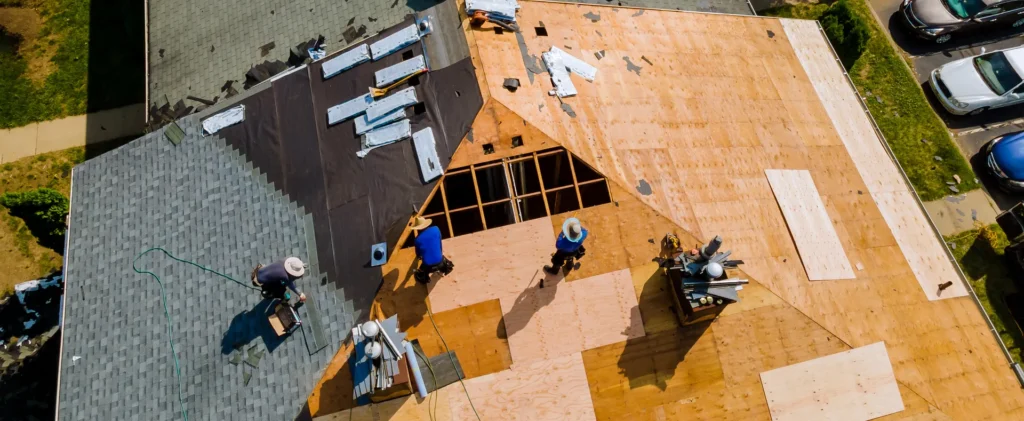
Essential Metrics for Evaluating Roofing Materials in Florida
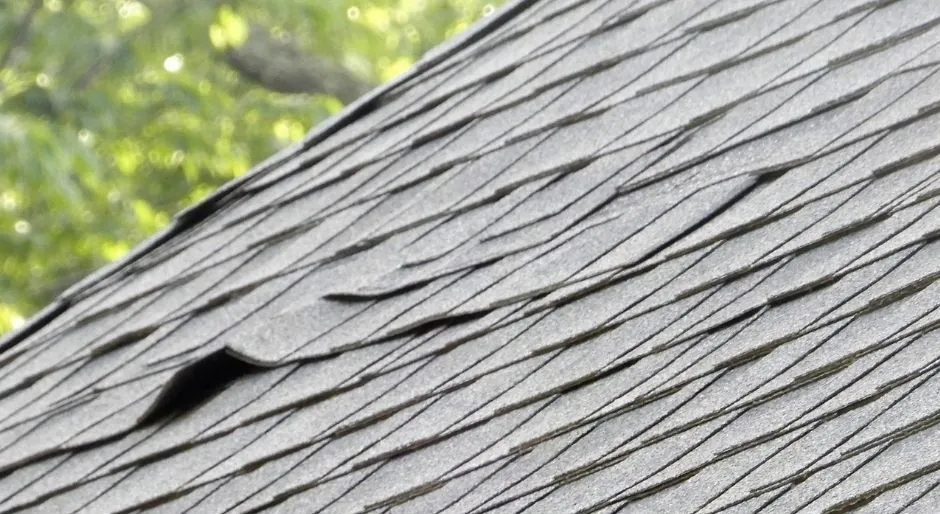
Wind Resistance Ratings
The quality of the material is one of the most important factors to consider while building or replacing a roof. Wind Resistance Rating is an evaluation tool used to assess the material’s resistance or ability to restrict the wind impact on the roof. It becomes particularly important in areas like Florida that are disaster-prone and experience strong winds regularly due to tropical storms.
The wind resistance rating of a material is divided into several categories and labeled on the product packaging to enable the consumer to identify the appropriate product according to the regulations in their area.
According to the Florida Building Code in TABLE R905.2.6.1, asphalt shingles used for roof covering must be tested as per ASTM D3161, TAS 107, or ASTM D7158. Roofs in Florida must be built with at least Class D, G, or H (ASTM D7158) or Class D or F (ASTM D3161).
The wind-resistance of asphalt shingles of different classes as per the UL’s test method (ANS/UL 2390) are given below-
Class Wind Speed
Class A 60 mph
Class D 90 mph
Class F 110 mph
Class G 120 mph
Class H 150 mph
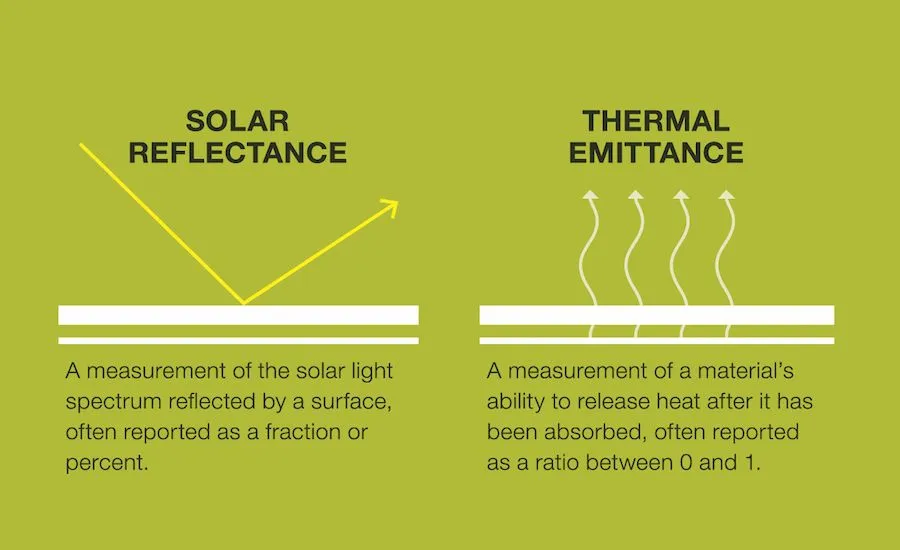
Solar Reflectance Index
The amount of heat experienced by a particular area is an essential factor to consider while building a home. It mainly affects the roof of a house as it has the primary responsibility to restrict the heat and protect the inhabitants from the high temperature outside. In areas like Florida, the Sunshine State, that experience high temperatures, it becomes extremely important to look for ways to mitigate the impact of this heat on the roof of a house, and the Solar Reflectance Index helps achieve that.
A roofing material’s Solar Reflectance Index (SRI) indicates its ability to reflect or give back the heat from the solar energy that falls on it. The SRI of material is expressed on a scale of 0 to 100, where 0 is the standard black and 100 is the standard white. Building roofs with a high SRI value enhances their longevity and the comfort of the people in the house. You can obtain the SRI value of a particular material through the U.S. Green Building Council (USGBC), which uses the ASTM International standards for conducting the reflectivity and emissivity testing and calculating the SRI. The minimum SRI value for roofs according to the LEED (Leadership in Energy and Environmental Design) V4 rating system is as follows-
Low sloped roof: 82
Steep-sloped roof: 39
Parking cover: 39
Additionally, the required 3-year aged SRI values are-
Low sloped roof: 64
Steep-sloped roof: 32
Parking Cover: 32
Most Popular Roofing Materials in Florida
A strong and sturdy roof is one of the top priorities for a home. With the frequent storms and scorching heat as a part of its climate features, Florida gets Mother Nature’s fury.
While it’s no secret that roof building or replacement is imperative for a safe home, it must be known that the selected material significantly impacts the protection, longevity, ease of maintenance, aesthetic appeal, and more. Hence, it is extremely important to give this subject its due diligence. Below are Florida’s most popular roofing materials with their advantages and drawbacks for an informed decision.
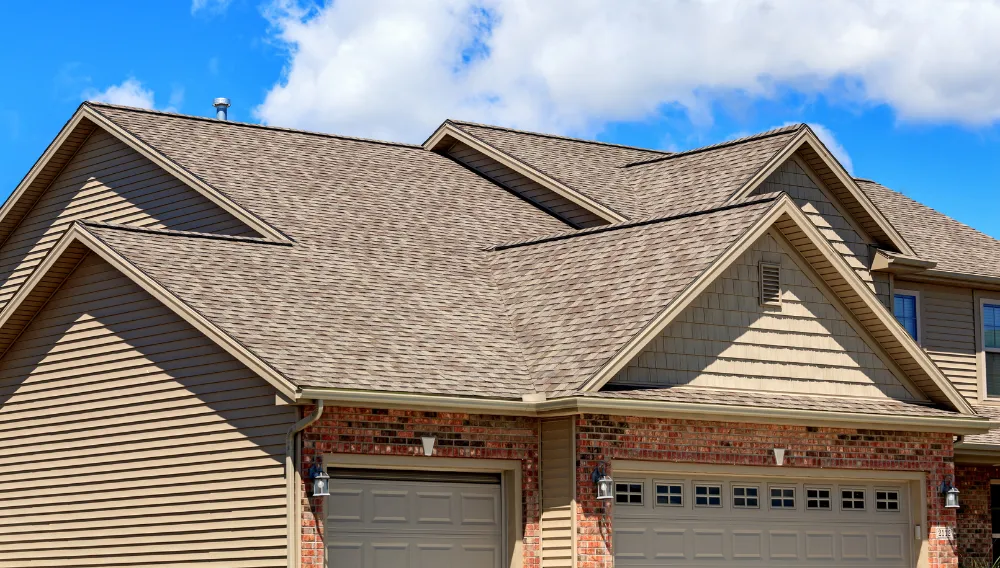
Asphalt Shingles
Asphalt shingles are one of the most popular roofing materials in the U.S., and Florida is no different. They are preferred for their affordability, ease of installation and maintenance, and variety in color and design. They comprise fiberglass or organic base mats, ceramic granules, and asphalt coating. It is advisable to consider the area’s climate, roof pitch, and warranty before selecting an asphalt shingle for a roof.
Below is an insight into how Florida’s unique weather conditions affect this material:
- Heat and humidity: Asphalt shingles can become brittle in high heat. They may also soften, making materials like leaves or branches stick to it and cause damage in the long run. Humidity can cause the shingles to curl, crack, or buckle.
- Mold growth: The moisture in the air can get trapped by the shingles, providing the optimum environment for mold growth on the surface and underneath. It may also happen due to algae in shady and humid areas, leading to material deterioration and potential health risks. Opt for Owens Corning’s shingles with StreakGuard® Algae Resistance Protection, which even provides you with a 25-year warranty.
- Salt air and corrosion: Salt air can lead to the oxidation of asphalt shingles and cause them to break down. It also corrodes the metal elements used in fixing asphalt roofs, such as nails or metal vents.
- Hurricanes: The strong winds associated with hurricanes can have a damaging impact on shingle roofs. The winds can tear off the shingles, exposing the area to rain that leads to water damage. Fortunately, technologies such as SureNail® from Owens Corning, provides consumers with wind resistance of up to 130-MPH.
- UV radiation: In areas that receive bright sunlight, UV radiation can cause the asphalt shingles to fade, turn brittle, and crack or split over time.
To learn more about shingle roofing, check out our blog post on everything about shingles.
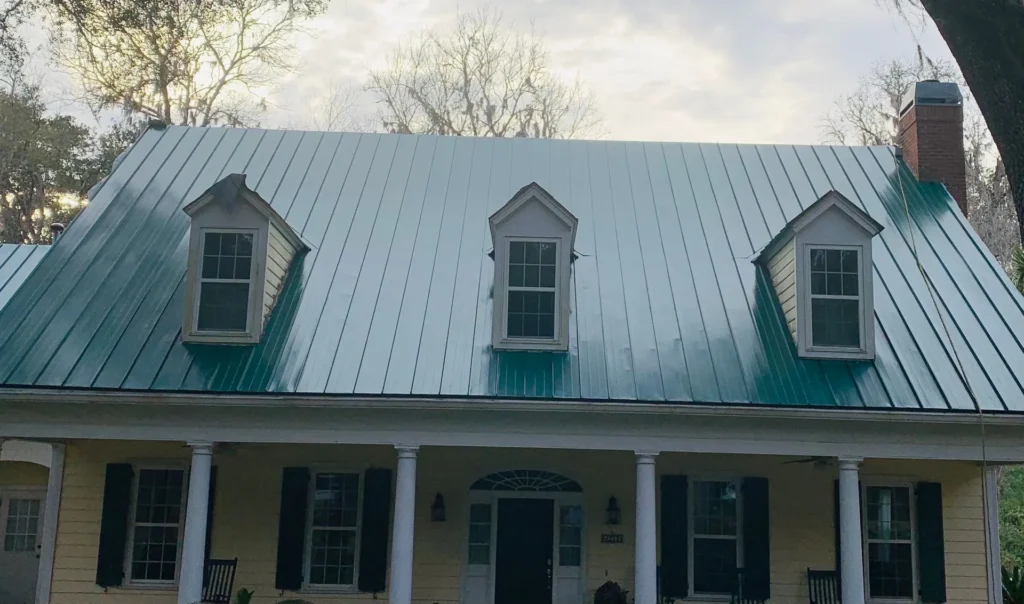
Metal
Metal as a roofing material is getting increasingly popular in Florida due to its strength and durability. It has a high capability to withstand the storm winds without sustaining any damage. It also reflects the heat into the atmosphere, reducing the tempering inside the home and the cooling cost. Metal roofs generally comprise steel, aluminum, copper, zinc, and tin.
Here’s how a metal roof responds to the extreme weather conditions of Florida:
- Heat and humidity: Metal roofs are reflective, sending the sun rays falling on them back into the environment, preventing the heat from being absorbed by the roofs. The effect of humidity on metal roofs is also minimal as it does not trap moisture.
- Mold growth: Metal does not absorb moisture, which significantly reduces the chances of mold growth on a metal roof. However, organic matter, such as leaves or wood on the roof, can provide the ground for mold growth.
- Salt air and corrosion: Metal roofs are prone to salt corrosion in a coastal state like Florida, particularly if the roof is not made of corrosion-resistant material or does not have a protective coating. The Tedlar® PVF Film by Metal Alliance offers superior protection of metal roofs against corrosion.
- Hurricanes: Metal roofs are extremely durable and wind-resistant, making them one of the most suitable materials for roofing in a hurricane-prone area like Florida. They offer the option to choose a metal rated according to the typical wind speed in the area.
- UV radiation: Constant exposure to harsh UV rays may lead to fading or degradation of material. However, protective finishes can significantly enhance the protection against UV rays and increase the roof’s durability. The WeatherXL™ SMP coating by Metal Alliance is a great options for protection against fading and chalking with a 30 -year warranty.
To learn more about metal roofing, check out our blog post about metal roofs.
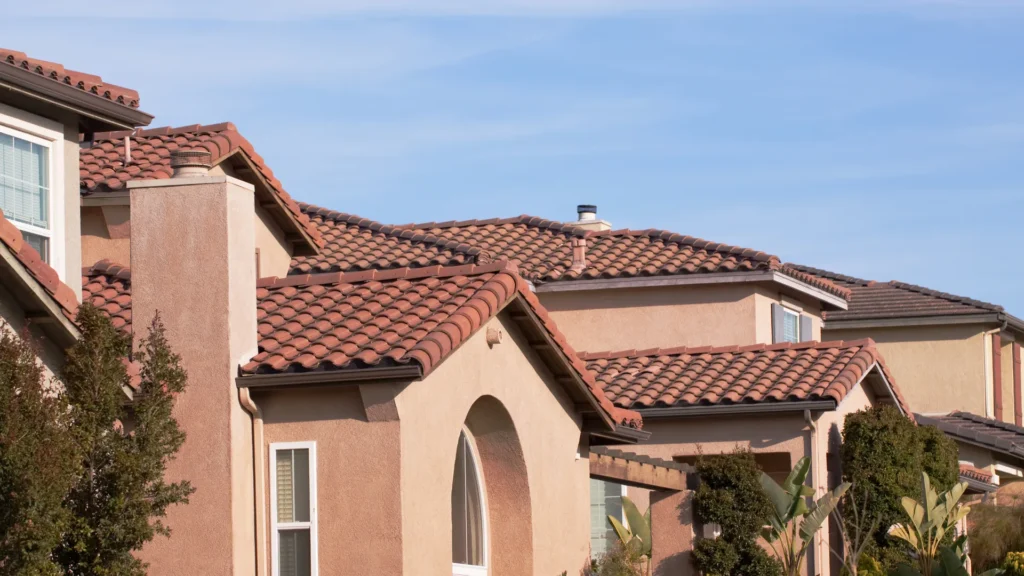
Tile
Tiles are another coveted material for roofing in Florida. Being energy-efficient, this material is particularly suitable for areas with a warm climate and is also resistant to wind, fire, and hail. They are also preferred for their visual appeal, as they are installed in an overlapping fashion, creating a pattern that offers an elegant look to the house. It is important to consider that tiles are one of the most expensive materials but also have a durability of over 70 years.
Here’s an overview of how tile roofs react to the distinct weather conditions of Florida:
- Heat and humidity: Tile roofs are one of the best options for the extreme heat and humidity of Florida. Tiles do not absorb heat, keeping the inside insulated during the hot summer or cold winter.
- Mold growth: Since tiles do not absorb moisture, they are not subject to rot or decay. Mold growth on a tile roof is highly unlikely, making it one of the most durable options in this regard.
- Salt air and corrosion: Tile roofs are generally made of non-metal materials like clay or concrete and, therefore, are resistant to corrosion or damage due to salt in the air.
- Hurricane: Tiles are well-suited to withstand the violent winds during a hurricane. They do not tear off and are sturdy enough to resist the damage by the flying debris that the winds bring.
- UV radiation: Tile roofs are resistant to damage due to UV radiation. They are made of non-metallic materials that do not fade or discolor over time due to exosure to sunlight.
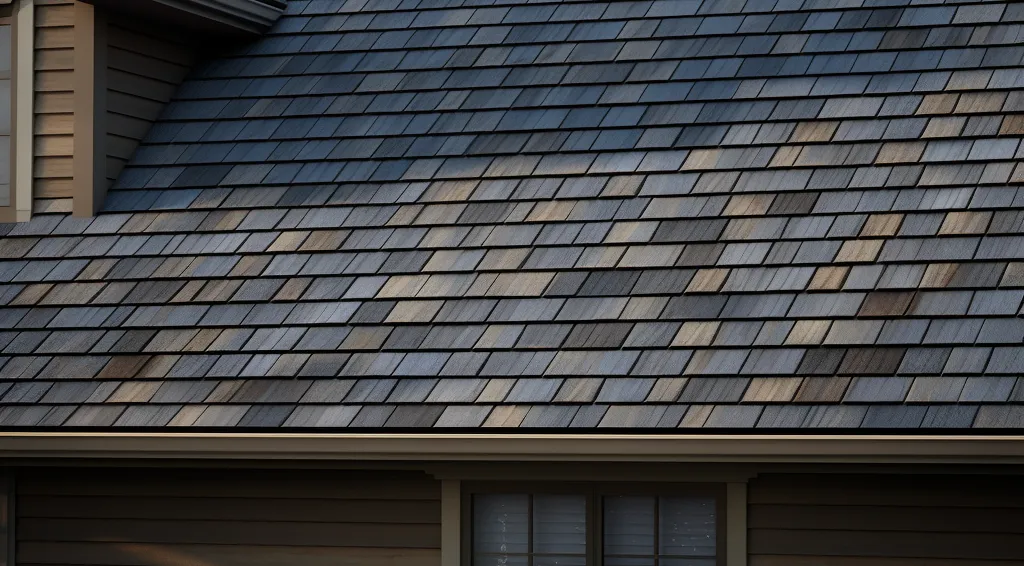
Synthetic Materials
Synthetic material roofing refers to man-made materials created out of plastic and resin to resemble the look and features of natural roofing materials like wood, stone, metal, and tiles. They are increasing in popularity because of their affordability, fire resistance, and efficiency in energy conservation. They may be ideal for people who want the look of a slate or wooden but are tight on budget. CeDUR’s roofing shakes are perfect for a wooden roof appearance.
Here’s how synthetic roofing materials are affected by the common weather conditions in Florida:
- Heat and humidity: Synthetic roofing materials are designed to reflect the heat away and are coated with moisture-resistant materials to remain unaffected by the humidity.
- Mold growth: Mold requires moisture presence to grow and synthetic materials are made to be non-porous to avoid moisture absorption, restricting mold growth.
- Salt air and corrosion: Made of non-metallic synthetic materials like resin or plastic, they do not rust or corrode due to salt air. They are also coated with a protective film to prevent corrosion.
- Hurricane: Synthetic materials vary in durability, however, they are generally lightweight and perfectly capable of resisting strong winds, preventing any tear or impact damage.
- UV radiation: Specifically designed to last in the outside weather, synthetic roofing materials come with a UV inhibitors that minimizes sun damage and prevents the materials from getting brittle over time.


